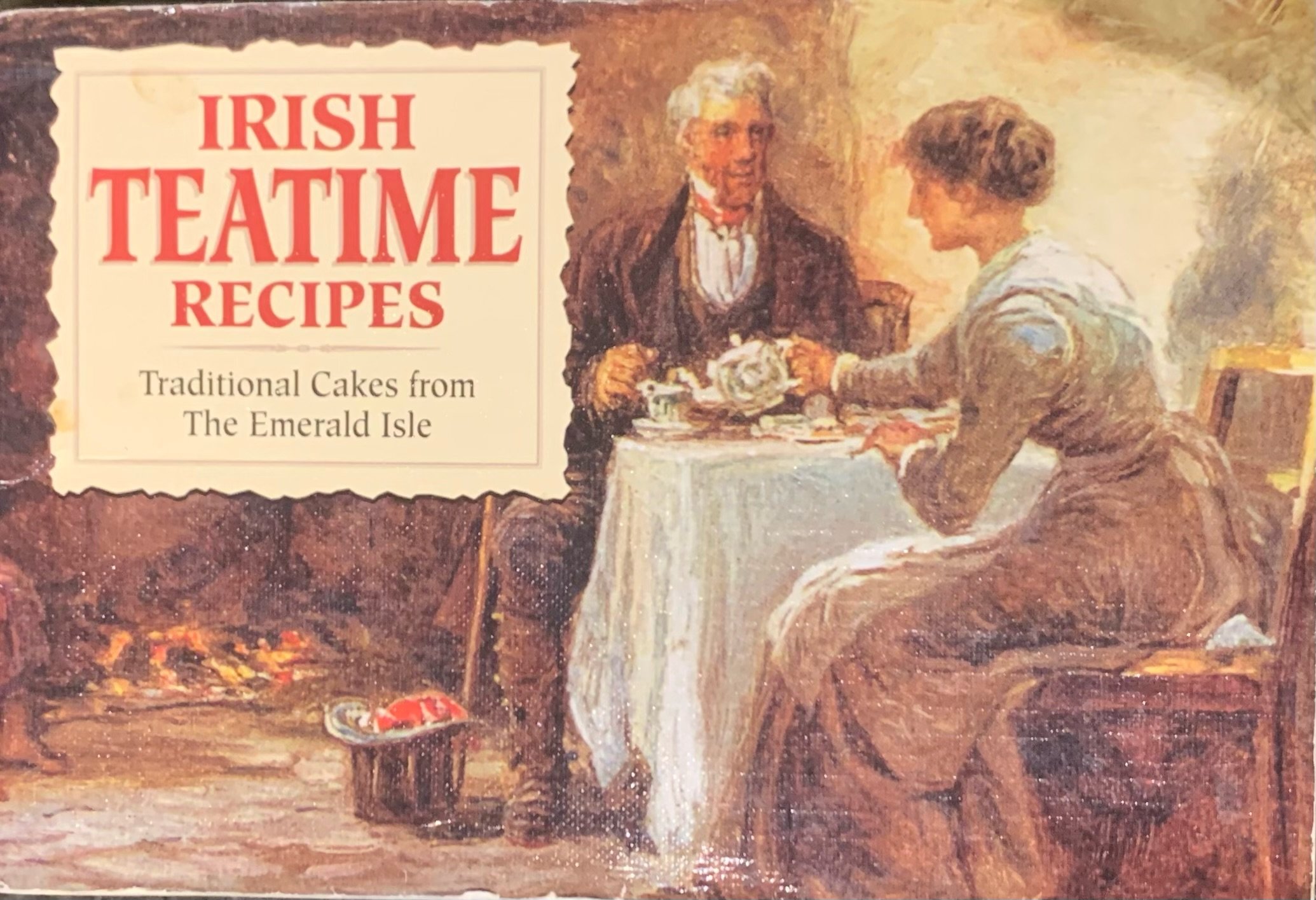Cakes and Clergymen: A Surprising Combination
Or, How I Came to a Truce with the Imperial Measuring System
I am surrounded by great gift givers. I find myself lucky to have friends and family whose presents always hit the spot, a perfect mix of utilitarianism and thoughtfulness. A few years ago, I was gifted with this little gem of a historical number called Irish Teatime Recipes: Traditional Cakes from The Emerald Isle.
This booklet has a variety of Irish baked treat recipes with artistic scenes from Ye Olde Petticoat Days. The dishes range from the famous boxty which is still popular today, to fruit cakes and spice cakes for the holiday season.
The booklet comes from now-defunct publisher J. Salmon, is out of print, and can only be bought used, on the U.K. Amazon website. (Not available anymore on the U.S. site.)
One of my favorite recipes from this booklet is the Vicarage cake. According to the book, this egg-less cake is traditionally made when the hens are not laying eggs, due to its ingredients (or lack thereof).
For those who don’t know, a Vicarage is the house provided by a local Church for the Vicar (pastor, priest, reverend) to live in. How the cake name relates to the chickens I have no idea, but then again I’m not a 19th-century clergyman, am I?
Why make a vicarage cake? Let me tell you:
It’s basic and easy. How easy? It has minimal ingredients and the basic instructions are “mix it together”. It’s a winner for beginners.
This cake rises with the help of just vinegar and baking soda, so it is perfect for those who have allergies to the chicken spawn that are typically used to make cakes light and fluffy.
Here are the original ingredients and instructions as printed by J. Salmon:
You will notice the hurried notes in the margins. The ounces that you see typed here are Imperial ounces, so my conversion to American ounces and thereby the American standard cup is actually not accurate. However, it’s just about as close as I could get while retaining my customary cup units.
Like many Americans, the Imperial system and Metric system together loom over me like an immovable mountain: I know it’s there, and the view from the top would probably put the whole world into clear perspective. Yet the journey to the peak looks too fraught with Gills and Millimeters to be attempted.
So, until I can make the journey into a well-organized worldwide system, Customary American units it is. They are baffling to persons with numerically discerning taste, but they comfort me. Like a warm, nonsensical blanket.
The more recipes I made from this book, the more I had a handle on the conversions. Still had to write them down, but it wasn’t as incomprehensible anymore. At last, at peace with the measurements.
My two most recent attempts at this cake involved trying to convert it into a vegan recipe. I had to Google my way through this and came up with some alternatives to butter and milk.
The almond butter/almond milk combo was the first cake I tried making. Unfortunately either due to the almond butter or due to the change in oven since the last time I made this cake, it turned out rock hard and inedible. It could have been due to a number of factors including a new(er) oven, old baking soda, wrong butter substitute, and a too-long bake time, but with all these factors it was hard to say which was the culprit. With my tail between my legs, I went back to the original recipe and followed that.
Tip: Adding the fruit makes a difference. Substantially. It changes the density of the cake. It also gives it a warm, festive feeling of a Christmas fruit cake without the obligatory heaviness.
This is an easy cake to experiment and get creative with. I substituted dried cranberries instead of sultanas and currents for a tart treat. Though this was also because I have giant dogs who can easily cruise the table for canine-toxic ingredients like raisins.
So here it is, the actual winning recipe, adapted from the original. I always thought I wouldn’t be one of those bloggers who hides the recipe down below a book’s worth of exposition, but it was too tempting to share all my adventures first!
1-½ cups flour
½ cup (8 Tb butter)
½ cup caster sugar (I didn’t have this so I just used regular sugar)
1/3 cup +1/4 cup craisins
½ tsp baking soda
¾ cup milk
1-½ Tb vinegar
Preheat oven to 325 (not 350 per the original. I found this out the hard way.). Sift flour into mixing bowl, rub in butter until the mix reaches breadcrumb texture. Stir in the sugar and dried cranberries.
Meanwhile, mix the milk, vinegar, and baking soda in a small bowl. Add to the dry ingredient bowl and mix. Pour mix into a greased 8”x8” cake pan. Bake for 45 minutes, checking for browning and done-ness before this. If the top of the cake begins to look too brown, tent with foil for the remainder of the bake. Remove from oven and transfer it to a cooling rack.
I baked mine at 325 for 1 hour and this was a little too long, the top and bottom got a bit too dark. Therefore in the recipe I suggest going for 45 minutes and checking before this time. It will certainly vary per oven.
In a perfect world I’d get right back in the kitchen and retry the same recipe for the fourth time at 45 minutes, but I am cake’d out at the moment. I will enjoy what I have made with its juicy cranberries and sweet fluffiness and look forward to the next time I pull this recipe out.
Happy baking.






